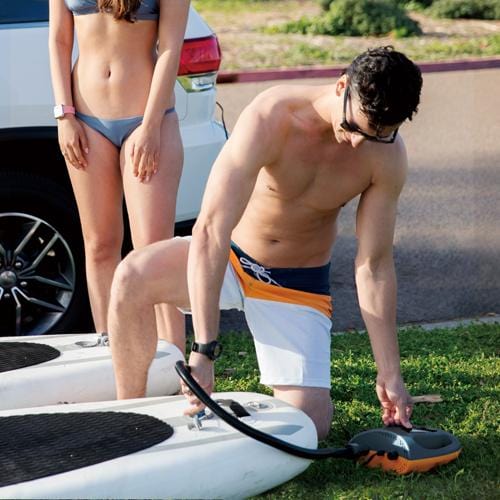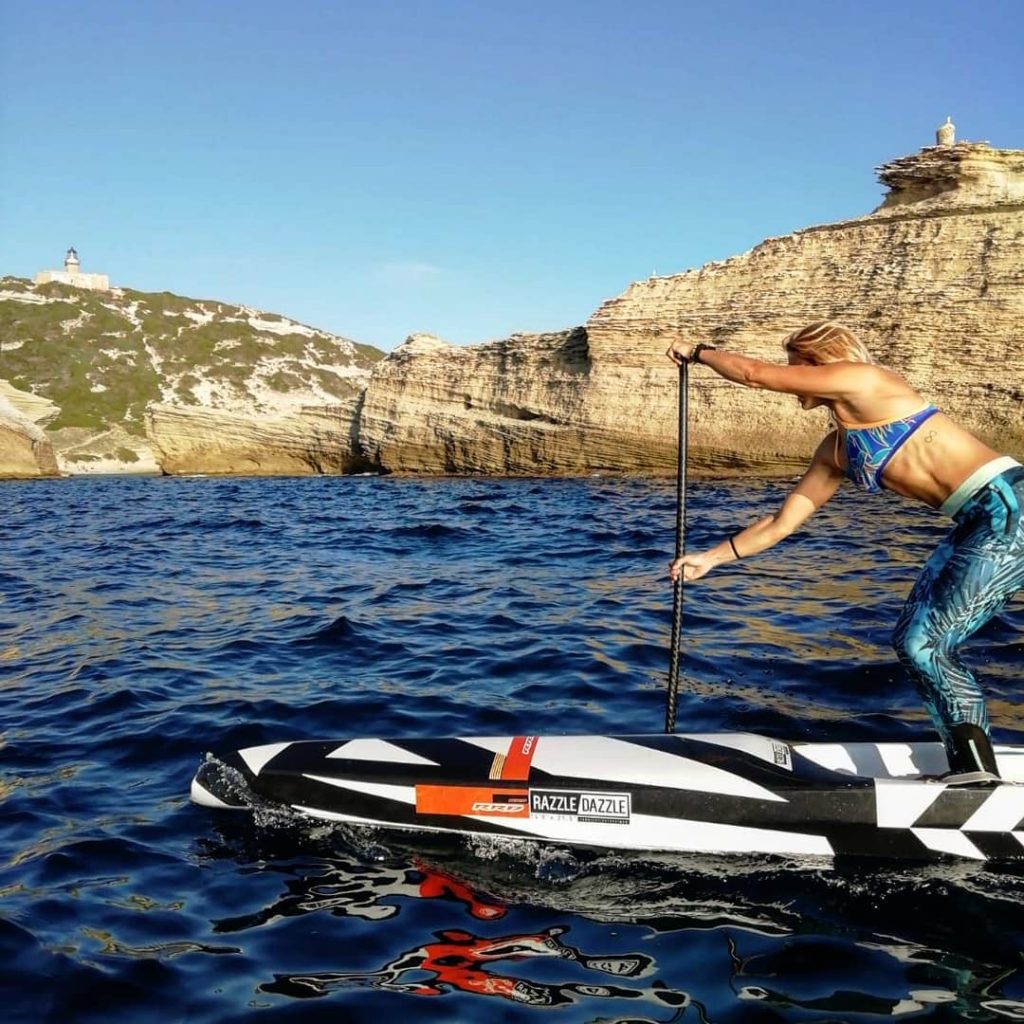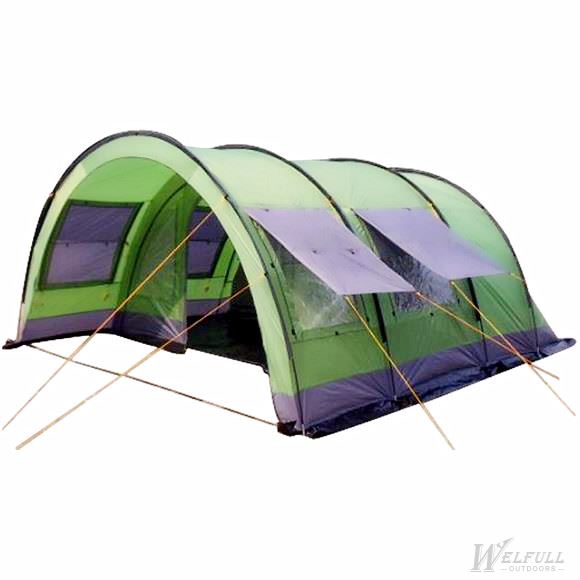9 Important Tips to Make Your SUP Camping Real Fun

If you’re an ardent camping enthusiast, it’s quite impossible for you to turn to paddling at some point of time during your camping life. Most campsites and forests do have beautiful lakes, ponds and rivers, and when you go beaching, there is of course the ocean. These water bodies beckon adventurers for paddling and there is perhaps nothing more enthralling than exploring miles of shoreline on a paddle board. If you’re planning to start paddling but aren’t sure where to start, here are a few paddleboard camping tips for you.
1. Choose Inflatable Paddle Board for Your Paddling Adventure
Kayak and canoe camping have been around for a long time, and paddleboard camping has provided a unique twist to those traditional camping styles. Now the latest craze is inflatable paddle boards. While paddleboards and standup paddleboards (SUPs) are quite huge and heavy, and thus carrying one to the water body can be quite cumbersome, inflatable paddleboards provide the convenience of being fitted into your car and letting you enjoy paddling in the sun on the water. Also, they are quite stable and rigid and thus are great for mot water bodies. Once blown up, they sit long in the water and are excellent for beginners as well as advanced paddling enthusiasts.
They are also more durable than hard/fiberglass boards and objects like logs, rocks, tree stumps etc. cannot easily ruin them.
As you may guess rightly, however, you’ll also have to carry an electric air pump to inflate your vessel. In this regard, the Shark II SUP Air Pump can perhaps be your best bet because it eliminates the time and hassle of manual inflating, doesn’t get overheated, you can plug it in your car’s 12 V DC connector, is compatible with almost any iSUP board, kayak, boat and even air mattress, and makes deflation easy. It’s also compact and light, so, it’s never a burden to carry it along with your paddleboard.

2. Plan Short Trips if You’re a Beginner
If you’re just starting out paddle boarding, don’t plan a 14-day SUP camping trip. Instead plan a short weekend trip first. Once you learn to avoid or rectify mistakes on such short trips, go for longer ones.
3. Prepare Your Body for Paddling
Paddling works the muscles of core, back and shoulders in a unique way. It will activate your muscles you hardly use in your daily life. Even you’ll find your feet sore after paddling. In such a case, if you’re not in good paddling shape, you’ll feel sore the next day after 4-5 hours of paddling with gear on your board.
Some beginner paddlers make the mistake of bending at the waist instead of hinging at the hips. That way they carry their bodyweight with their lower back and this makes them sore the next day. So, it’s important to prepare your body for paddling and work on proper technique.
Remember to bend your knees slightly, hinge at the hips, keep your back flat, keep your legs soft and body as relaxed as you can, and rotate your torso with every stroke.

4. Pack Light
An age-old adage is “travel light”. It’s true for paddle boarding too. While packing your paddle board, canoe or kayak with gear, it’s better to go lightweight and minimalist. You don’t have much of cargo room and you don’t want unnecessary luggage.
It’s a good idea to keep your most gear on the front or near your feet, i.e. the middle of your vessel. This way you can keep your board stable to an optimum extent. You’ll have to experiment with this, and make sure what works for your paddleboard and your gear. This needs practice with your gear on your board in the water.
5. Practice Packing Your Board at Home
Several SUPers often skip this step, simply because they find it unimportant. However, it can save them from unpleasant surprises in the middle of their trip.
All you have to do is inflate your paddle board with your SUP pump before embarking on your trip i.e. when you are at your home and pack your gear on the deck as if you’ll on your trip. Make sure everything fits on your deck and you can organize it well.
Placing all or most of your gear near your toes is by far the best thing to do because that way, everything is near the center of the board. If you’re going to meet whitewater on your trip, you should keep more weight on the front of the board.
Some items are such that you may need to access them easily and quickly while you’re paddling or taking a break. Take time to organize your gear considering this.
Never place heavy items too high. Instead place the heaviest items spread flat on the deck. Most iSUPs are 6” thick and their rails are round. Hence, if there are a lot of heavy items in your luggage stacked too high and strapped to your deck, your board could capsize. And then it can be difficult to turn it upright. This is a reason why you should SUP camp in a group and wear a life jacket.
6. Use Dry Bags
When you’ll be on water, you can’t hope to have all your gear bags dry. They are bound to get wet. Here dry bags can come to your rescue.
Pack your clothes, food, electronic gadgets and similar items in dry bags. It’s always better to double dry bag, i.e. packing these items in small dry bags and then packing all those small bags in one big dry bag.
Remember not to throw your wet clothes in dry bags because they will make all items in that dry bag wet. Hence don’t forget to keep a separate bag for wet clothes in your luggage.

7. A Spare Paddle can be a Lifesaver
Don’t fail to carry an extra paddle. If in any case, you lose or damage your paddle, the extra paddle will be a lifesaver. If you’re paddleboard camping in a group, instruct a particular person/s to carry extra paddle/s.
8. Carry Safety Device and Other Safety Gear
It’s a must to wear PFD or personal floatation device. Other than that you should carry the following safety gear:
- First aid kit
- Water filter
- Knife
- Paddleboard repair kit
- Board leash and an extra leash
- Extra paddles (at least 2-3)
- GPS device
- Compass
- Maps (it’s better to carry both digital and hard copies)
- Flashlight
- Sunscreen
- Bug repellent
- Spare fin
9. Give an Idea of Your Trip to Your Family or Friends
When you’re on the water, there are all possibilities of disasters. In that case, your family or friends should have an idea of where you are exactly. Give them the idea as best as you can about where you will be on a particular day. You can do so by studying maps and talking to locals or concerned authorities.
Planning beforehand on your convenience and safety with the above tips can make your paddleboard camping real fun. Happy SUP camping!
















